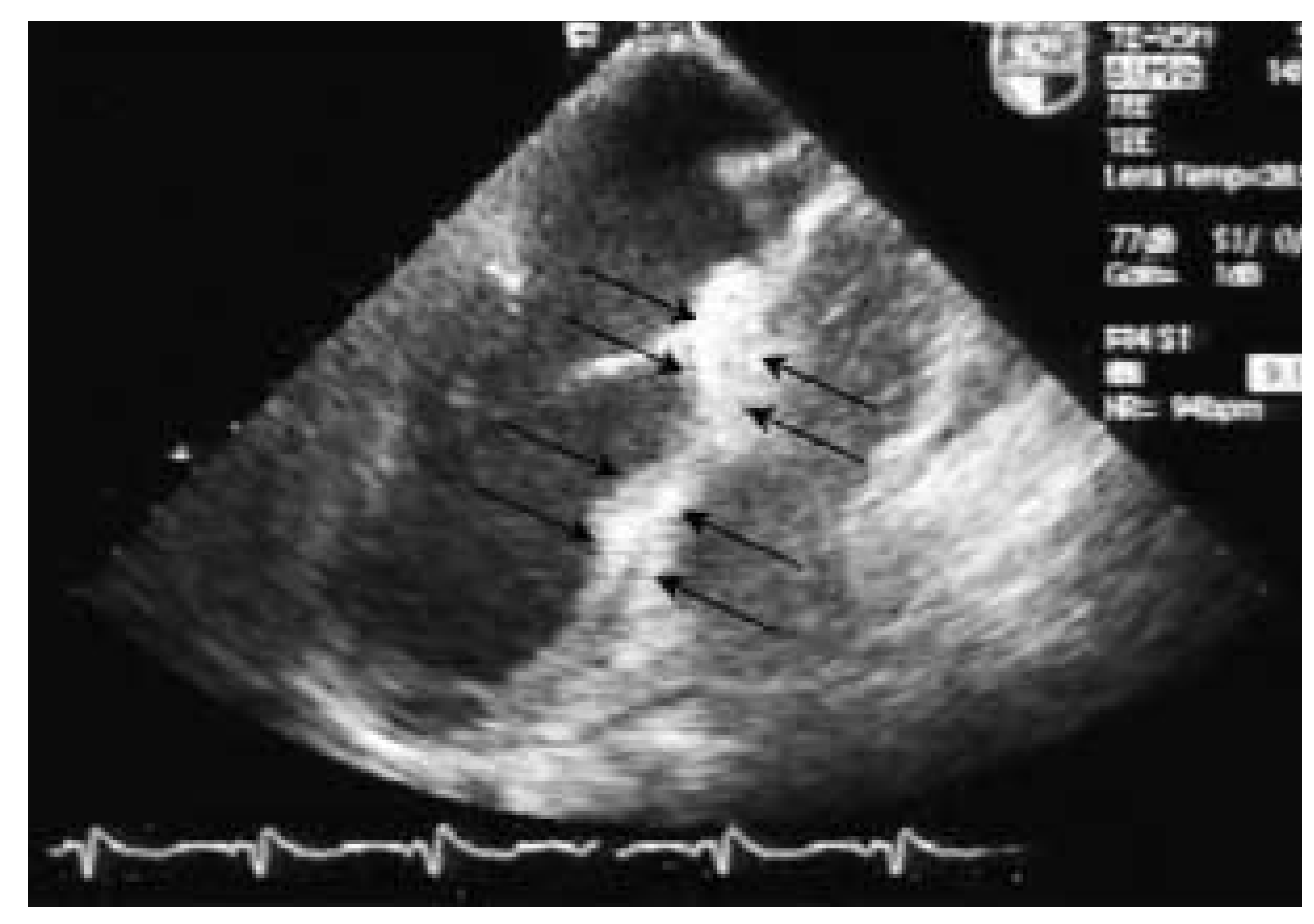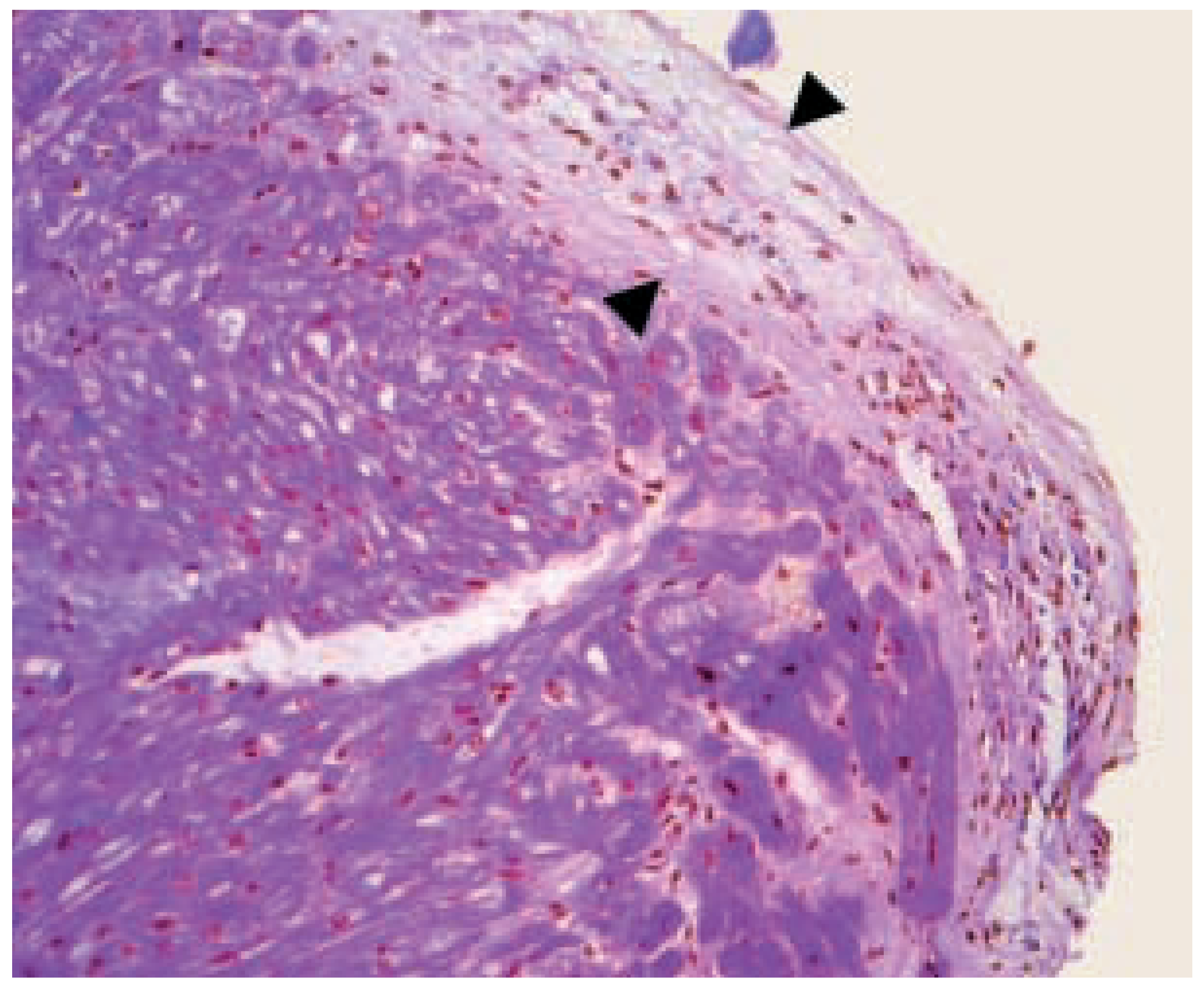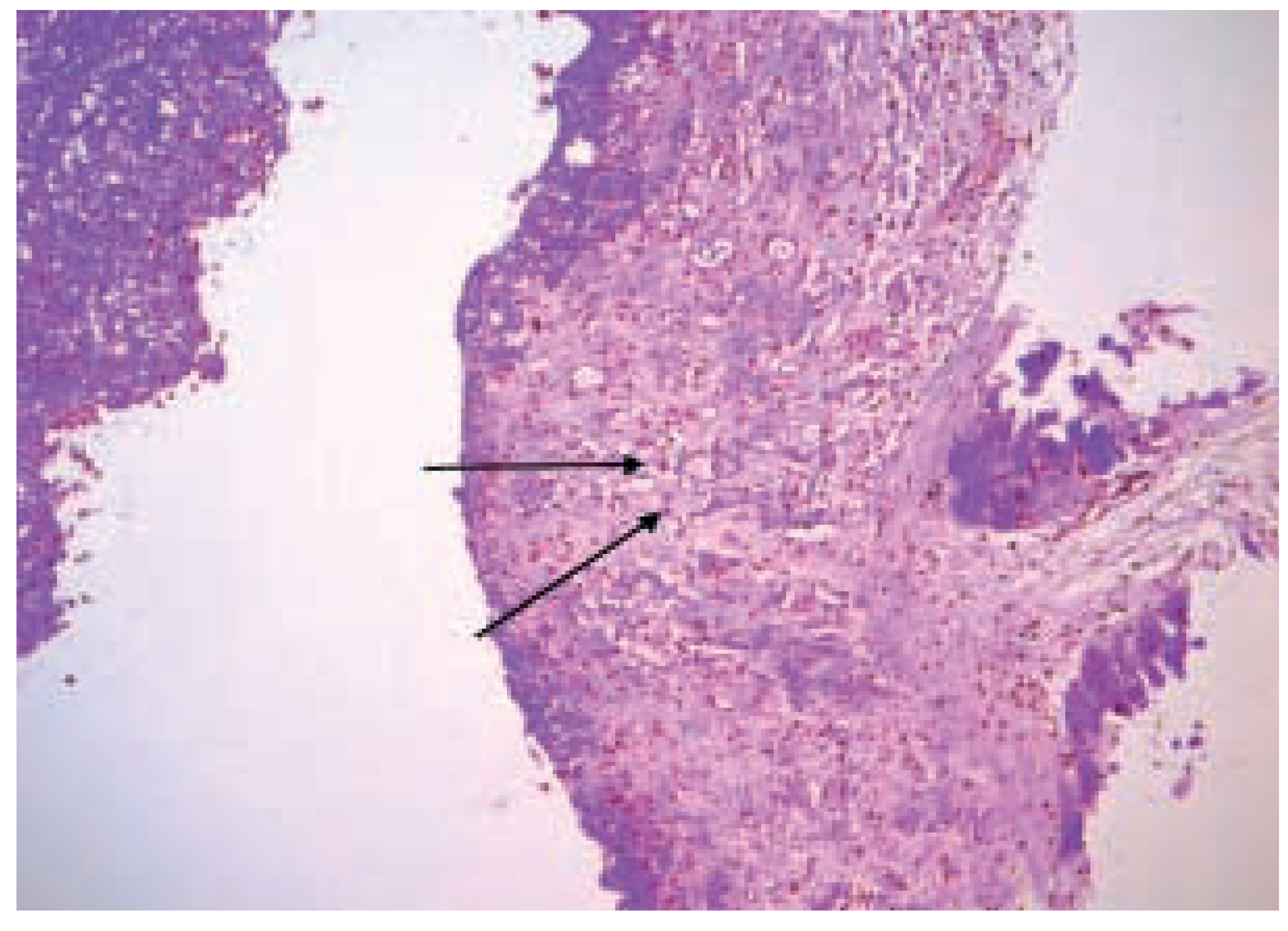Hypereosinophilia and Brightness, not just a Failing Heart
References
- Acquatella, H.; Schiller, N.B. Echocardiographic recognition of Chagas’ disease and endomyocardial fibrosis. J Am Soc Echocardiogr 1988, 1, 60–68. [Google Scholar] [CrossRef] [PubMed]
- Desreumaux, P.; Janin, A.; Dubucquoi, S.; et al. Synthesis of interleukin-5 by activated eosinophils in patients with eosinophilic heart diseases. Blood 1993, 82, 1553–1560. [Google Scholar] [CrossRef] [PubMed][Green Version]
- Weller, P.F.; Bubley, G.J. The idiopathic hypereosinophilic syndrome. Blood 1994, 83, 2759–2763. [Google Scholar] [CrossRef] [PubMed]
- Chusid, M.J.; Dale, D.C.; West, B.C.; et al. The hypereosinophilic syndrome: analysis of fourteen cases with review of the literature. Medicine (Baltimore) 1975, 54, 1–27. [Google Scholar] [CrossRef] [PubMed]



© 2004 by the author. Attribution Non-Commercial NoDerivatives 4.0.
Share and Cite
Cook, S.; Wenaweser, P. Hypereosinophilia and Brightness, not just a Failing Heart. Cardiovasc. Med. 2004, 7, 185. https://doi.org/10.4414/cvm.2004.01020
Cook S, Wenaweser P. Hypereosinophilia and Brightness, not just a Failing Heart. Cardiovascular Medicine. 2004; 7(4):185. https://doi.org/10.4414/cvm.2004.01020
Chicago/Turabian StyleCook, Stéphane, and Peter Wenaweser. 2004. "Hypereosinophilia and Brightness, not just a Failing Heart" Cardiovascular Medicine 7, no. 4: 185. https://doi.org/10.4414/cvm.2004.01020
APA StyleCook, S., & Wenaweser, P. (2004). Hypereosinophilia and Brightness, not just a Failing Heart. Cardiovascular Medicine, 7(4), 185. https://doi.org/10.4414/cvm.2004.01020



